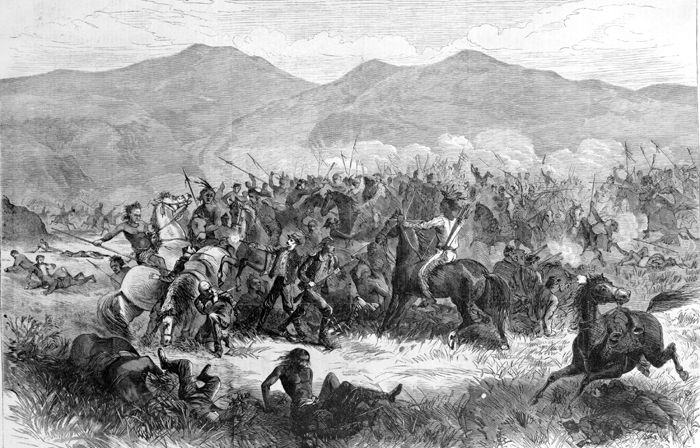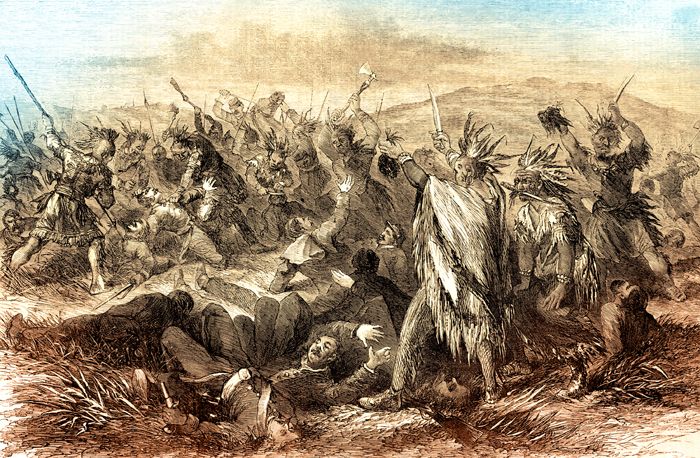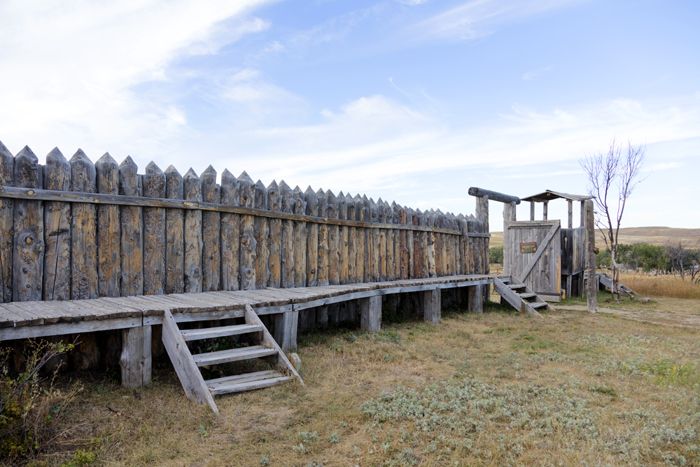Fetterman Fight, Wyoming – Legends of America (original) (raw)
The Fetterman Massacre in northeast Wyoming.
In December 1866, a small band of Sioux and Cheyenne led an ambush now known as the Fetterman Fight or Fetterman Massacre.
Much like the skirmish at Peno Creek earlier in the month, a small band of Sioux and Cheyenne were once again harassing troops who were out on wood-cutting detail on December 21, 1866. About ten warriors attacked as the troops returned to Fort Phil Kearny, Wyoming. Colonel Henry B. Carrington sent Captain William J. Fetterman with 80 men, which included two more officers, 76 soldiers, and two civilians — a total of 81 men to relieve the troops hauling back the wood wagons.
However, it was an elaborate decoy maneuver to draw soldiers out of the fort. As the small group of Natives was making their attack on the woodcutters, a group of as many as 1,000 Sioux, Cheyenne, and Arapaho warriors were waiting about two miles to the north. Before the troops left the fort, Colonel Henry B. Carrington warned Fetterman that he was not to cross Lodge Trail Ridge, where he would be out of sight of the fort under any circumstances. However, just as the Indians had planned, Fetterman allowed a small party of warriors to ‘decoy’ him northward well beyond the ridge and into a carefully rehearsed ambush prepared by Chief Red Cloud and Minneconjou Sioux Chief High Back Bone.
Fort Phil Kearny, Wyoming, today by Carol Highsmith.
As soon as the soldiers were out of sight of the fort, the concealed warriors, which included Sioux warriors Crazy Horse, Black Shield, and White Bull, struck. On the north-south ridge that would become known as Massacre Hill, the warriors, perfectly following the plan, annihilated the small force to the last man. The battle lasted only about half an hour. Relief columns from the fort, which scattered the Indians, were too late to rescue Fetterman and his men. Captains Fetterman and Frederick H. Brown reportedly shot each other in the head simultaneously at the end of the battle.
Nonetheless, casualties among the Indians were great because they were poorly armed to compete with the new repeating rifles of the soldiers. The Cheyenne lost two men, the Arapaho one and the Lakota Sioux, about 60. Perhaps 100 were wounded.
The Indians named this battle “The Battle of the Hundred Slain.” The whites knew it as the Fetterman Massacre because the soldiers were led by Captain Fetterman, who had boasted that he could defeat the entire Sioux Nation with a single company of cavalrymen. The battle was the worst defeat inflicted on the Army by the Plains Indians until then.
Following the Fetterman Massacre, Carrington hired civilians John “Portugee” Phillips and Daniel Dixon to carry a message to the telegraph station at Horseshoe Bend, near Fort Laramie, requesting reinforcements to Omaha headquarters. Phillips continued on through a snowstorm to Fort Laramie on a 236-mile ride, honored in the annals of Wyoming history.

The Fetterman Fight at Fort Phillip Kearny, Wyoming.
In the meantime, when the news of the Fetterman Massacre reached the East, it caused much excitement. Colonel Carrington was severely criticized, and he, in turn, complained that Philip St. George Cooke, the department commander, had refused reinforcements and that 700 men were insufficient to garrison three posts in the heart of the hostile Indian country. Carrington was replaced in January 1867.
President Andrew Johnson ordered an investigation, which resulted in the troops’ withdrawal from the Powder River country by the existing treaties. Forts Reno, Philip Kearny, and C. F. Smith were later abandoned in August 1868. Cheyenne warrior Little Wolf burned the buildings at Fort Philip Kearny afterward.
Today, the stockade of Fort Phil Kearny has been reconstructed. Both the Fetterman Massacre and Wagon Box Fight lie within a few miles of one another just off I-90 in the vicinity of Story, Wyoming. The fort and Wagon Box sites are located on secondary roads, and the Fetterman Massacre site is on U.S. 87.
The State of Wyoming operates the site, which is located near Banner, Wyoming.
Contact Information:
Fort Fetterman State Historic Site
752 Hwy. 93
Douglas, Wyoming 82633
307-684-7629

